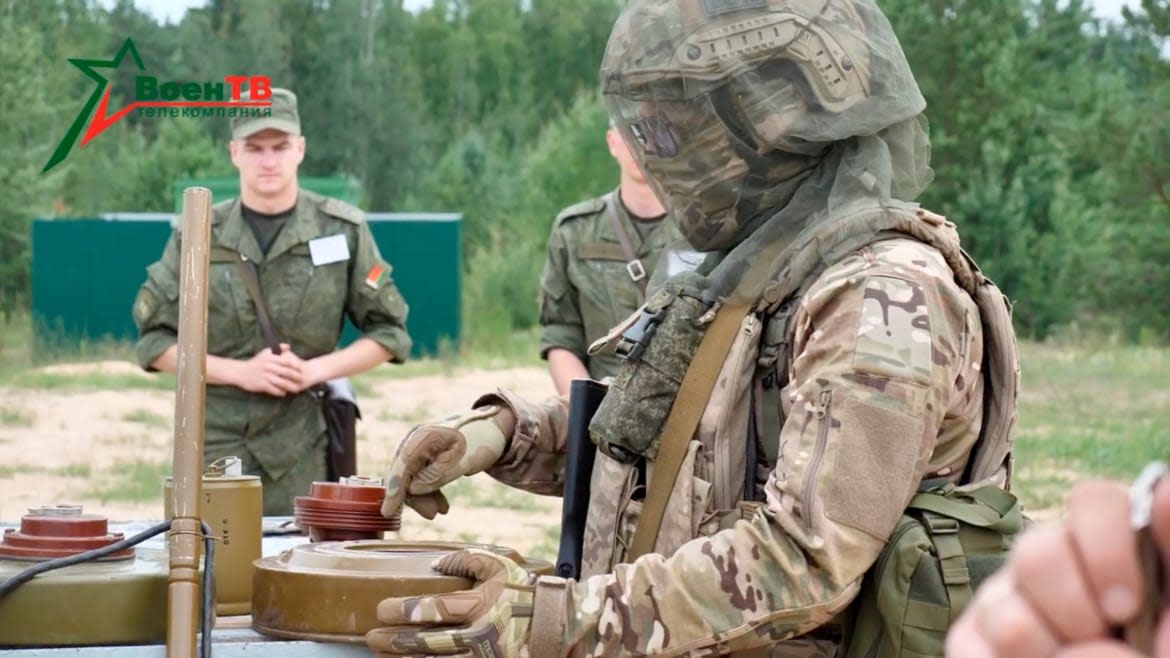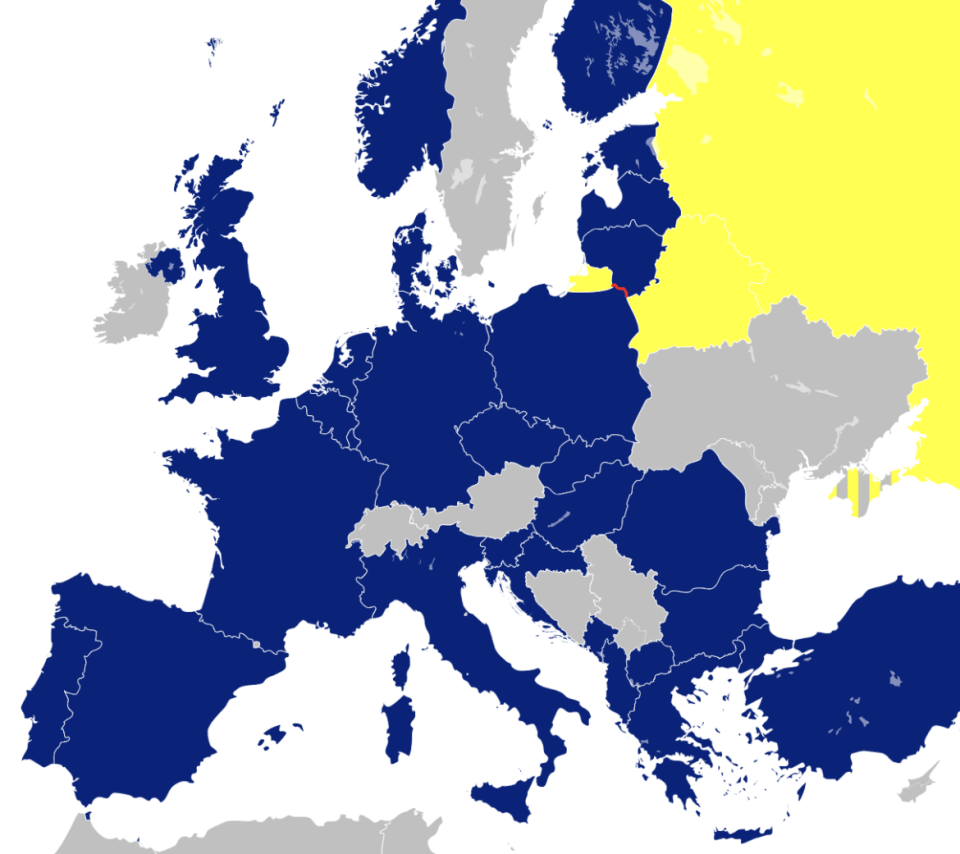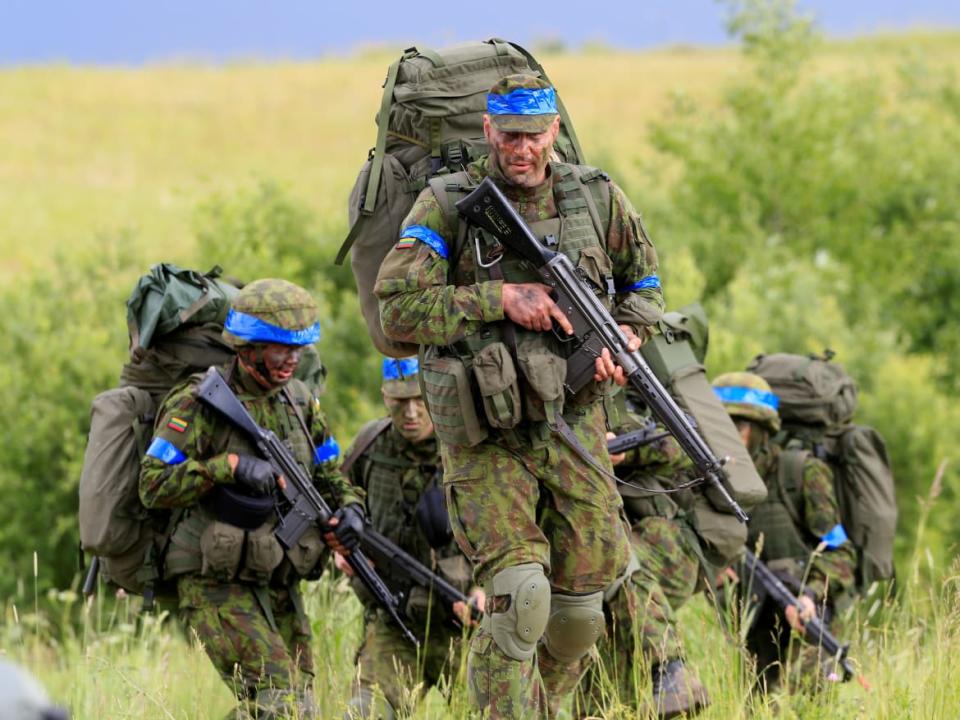Wagner Mercs May Soon ‘Infiltrate’ Poland, PM Warns

- Oops!Something went wrong.Please try again later.
- Oops!Something went wrong.Please try again later.
More than 100 members of the notorious Wagner Group are moving towards Poland’s border with Belarus, setting off alarm bells among NATO leaders and local authorities.
Polish Prime Minister Mateusz Morawiecki confirmed reports of the Russian mercenary group’s movements on Saturday, saying his intel put mercenaries near the vulnerable Suwałki Gap in Grodno, approximately 10 miles from the Polish border. Along with recent trainings near the border, it’s the closest Wagner fighters have been to NATO territory since President Vladimir Putin invaded Ukraine in Feb. 2022.
“Now the situation is becoming even more dangerous,” Morawiecki said at a press conference. “This is certainly a step towards a further hybrid attack on Polish territory.”
Local media in Poland and Belarus have reported sightings of more than 100 Wagner mercenaries moving towards the Suwałki Gap—a thin strip of land that is the border between NATO members Poland and Lithuania, but is flanked by Belarusian and Russian land on each side. The news comes after the Belarusian Defense Ministry confirmed earlier this month that the Russian mercenary group had teamed up with Belarusian troops to share their ruthless tactics, with Wagner bosses declaring a a new “beginning” for the group in that country.

A map highlighting the Suwałki Gap—the strategically-important 60-mile border between Poland and Lithuania, flanked by Russian and Belarusian land, that connects NATO’s baltic members to the rest of its allies by land. The border is highlighted in red.
Morawiecki previously said he thinks Belarus, a key Russia ally, has been sending migrants to the Polish border en masse to overwhelm its forces there. Now, he fears, Russia’s next strategy could be to sneak mercenaries into Poland amid the allegedly orchestrated chaos at the border.
“They will probably be disguised as Belarusian border guards and will help illegal immigrants to enter Polish territory, destabilize Poland,” Morawiecki said Saturday, “but they will also probably try to infiltrate Poland pretending to be illegal immigrants and this creates additional risks.”
It’s unclear what Wagner fighters would do if they succeeded in breaching NATO borders. However, given the group’s infamous volatility—like its former leader Yevgeny Prigozhin’s recent mutiny against Moscow—and fractured leadership, anything is possible.
Some war-torn Wagner troops, banished to Belarus as a deal to end Prigozhin’s short-lived mutiny, have said they wish to storm Poland, Belarus President and Putin pal Alexander Lukashenko said last weekend.
“The Wagner guys have started to stress us,” Lukashenko said in a meeting with Putin in St. Petersburg. “They want to go west, [saying] ‘Let’s go on a trip to Warsaw and Rzeszow.’”
To beef up the border, Morawiecki says he ordered an influx of Polish troops and 500 cops to the region, where a wall is also being constructed to limit possible crossing points. The prime minister has repeatedly assured that Poland and its borders are secure.
It is clear, however, that many Polish leaders view the recent near-border military exercises as a threat in itself. Zbigniew Hoffmann, the secretary of Poland’s National Security Committee, recently characterized the exercises as “undoubtedly a provocation.”

Lithuanian soldiers training near the Suwałki Gap in 2017. The area, at the border separating Poland and Lithuania, flanked by Russian and Belarusian land, has long been viewed as one of NATO’s most vulnerable.
The destabilization at the Suwałki Gap could have consequences on a global stage. If a Russian- or Belarusian-ordered attack were to occur on Lithuanian or Polish soil, NATO’s Article 5, which bands members into a pact that an attack on one is an attack on all, would be invoked—potentially catapulting much of Europe, the United States, and Canada into war with Russia.
The Suwałki Gap has long been considered one the most vital—and vulnerable—strips of NATO soil. If a conflict were to break out and the 60-mile strip were taken over by enemy forces, NATO would be completely cut off by land from its Baltic members Lithuania, Latvia and Estonia.
Russian troops training in proximity to the Suwałki Gap isn’t unprecedented. In 2019, the Russian and Belarusian armies conducted exercises in Western Belarus with upwards of 12,000 soldiers and 950 vehicles—a move that put the West on high alert and drew public ire from its leaders.
Article 5 has only been invoked once in its 74-year history—after the Sept. 11 attacks in New York City and at the Pentagon in 2001.
Experts studying Russia, NATO and Eastern European conflicts have long identified the Suwałki Gap as the most likely inflection point if Russia were to instigate a war with NATO. For Putin, securing the corridor wouldn’t just isolate the Baltic states, it’d provide long-craved protection to the south of Kaliningrad—Russia’s strategic enclave on the Baltic Sea, which is surrounded entirely by NATO nations. The port city is also home to Russia’s all-important Baltic Fleet.
While Russian forces would be sorely outnumbered in an all-out war against NATO, many of the coalition’s troops are based hundreds—or thousands, in the case of the U.S.—of miles away. Russia, meanwhile, has recently had as many 30,000 troops and heavy artillery stationed in and around Kaliningrad, reportedly ready for mobilization at a moment’s notice.
“The Suwałki Corridor is where the many weaknesses in NATO’s strategy and force posture converge,” said a 2018 report for the Center for European Policy in Washington. “...The gap is vulnerable.”
Get the Daily Beast's biggest scoops and scandals delivered right to your inbox. Sign up now.
Stay informed and gain unlimited access to the Daily Beast's unmatched reporting. Subscribe now.

